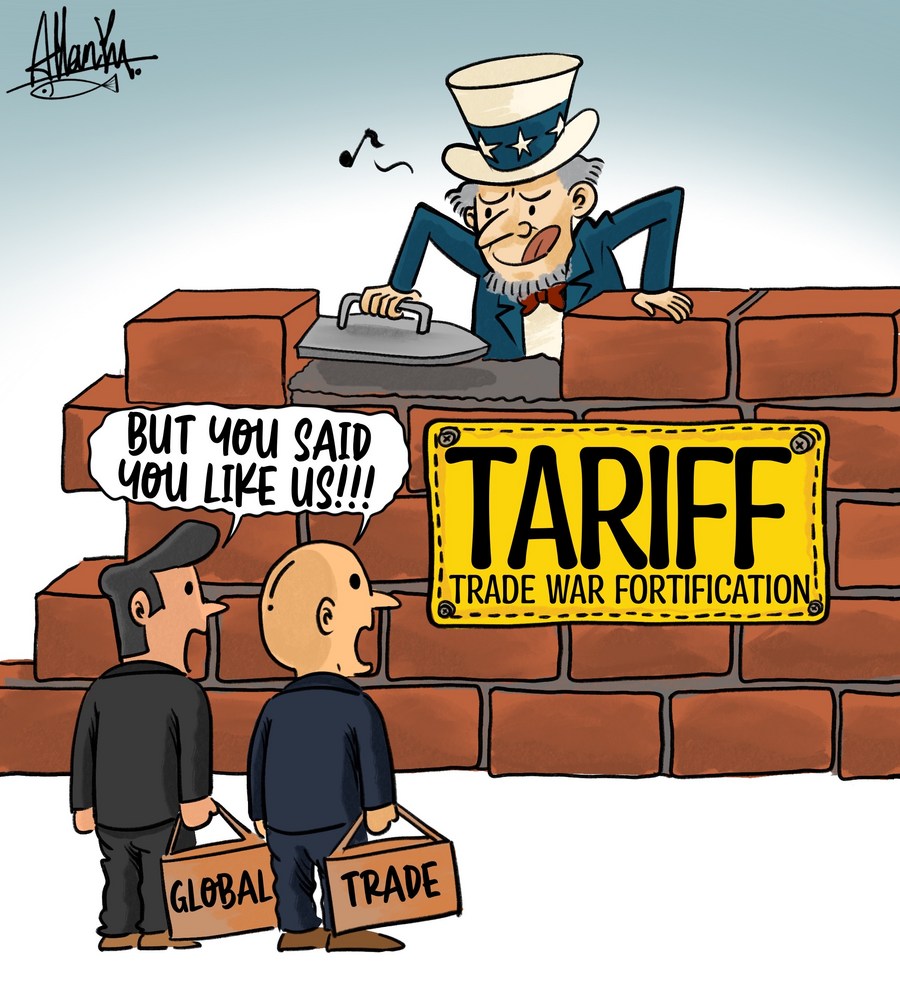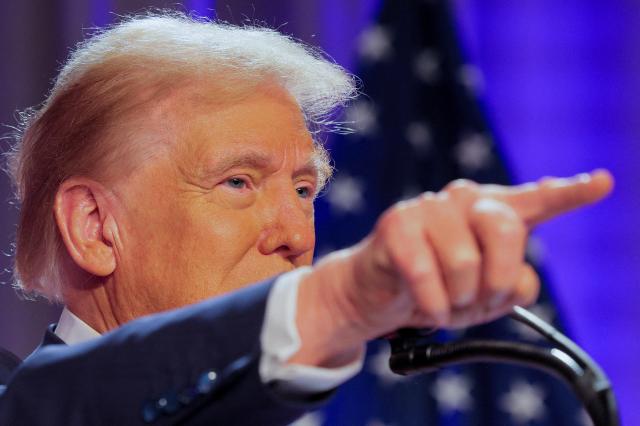Beyond the “Happy” Surface: A Deep Dive into Trump’s Policy Shifts
The public discourse surrounding Donald Trump’s presidency often painted a vivid, sometimes polarizing, picture. Headlines screamed, tweets flew, and the constant churn of news cycles could easily mask the intricate and often surprising shifts in policy that quietly reshaped America’s domestic and international landscape. While the “happy” surface of political pronouncements captured attention, a deeper examination of Trump’s policy shifts reveals a complex tapestry of evolving strategies and impactful decisions. This deep dive aims to look beyond the immediate reactions and explore the substance and implications of these pivotal changes.
For many, Trump’s approach was characterized by a departure from established norms, a move that some viewed as refreshing and others as destabilizing. Understanding these Trump policy shifts requires dissecting specific areas where his administration made notable alterations to long-standing practices.
The Economic Rollercoaster: Tariffs, Trade, and Tax Reform
One of the most visible areas of Trump’s policy shifts was in economic and trade policy. His administration initiated a significant move towards protectionism, challenging multilateral trade agreements and imposing tariffs on goods from key trading partners like China and the European Union.
- Tariff Wars: The rationale behind these tariffs was often articulated as a means to protect American industries and jobs. However, the imposition of retaliatory tariffs led to increased costs for American consumers and businesses, creating a complex economic ripple effect. Examining the impact of Trump’s policy shifts on various sectors reveals both winners and losers.
- Trade Agreements: Trump’s administration renegotiated long-standing trade deals, notably the North American Free Trade Agreement (NAFTA), which was replaced by the United States-Mexico-Canada Agreement (USMCA). This move signaled a broader intention to re-evaluate America’s role in global commerce.
- Tax Cuts: The Tax Cuts and Jobs Act of 2017 represented a significant legislative achievement, drastically lowering corporate and individual income tax rates. Proponents argued this would stimulate economic growth, while critics pointed to its impact on the national debt and its disproportionate benefits to higher earners.
Immigration: From Rhetoric to Reconfiguration
Immigration policy was a cornerstone of Trump’s campaign and a focal point of his administration. The shifting policies of Trump in this domain were marked by a significant tightening of borders and a re-evaluation of existing immigration laws.
- Border Security: The emphasis on building a wall along the U.S.-Mexico border and increasing deportations were prominent features. These actions often sparked intense debate regarding humanitarian concerns and the efficacy of such measures.
- Travel Bans: Executive orders restricting travel from several Muslim-majority countries became a highly contentious issue, leading to legal challenges and international outcry.
- DACA and Asylum: The administration also took steps to unwind the Deferred Action for Childhood Arrivals (DACA) program and made changes to the asylum process, altering the pathways for many seeking refuge or legal status in the United States.
Foreign Policy Reorientation: “America First” in Practice
Trump’s foreign policy was famously encapsulated by the “America First” doctrine, a principle that led to a re-examination of long-standing alliances and international commitments. The Trump administration’s hidden policy shifts in this arena often had profound global implications.
- Withdrawal from Agreements: Notable decisions included the withdrawal from the Trans-Pacific Partnership trade agreement and the Paris Agreement on climate change. The U.S. also exited the Iran nuclear deal.
- Middle East Policy: Trump’s approach to the Middle East saw a significant recalibration, including the relocation of the U.S. embassy in Israel to Jerusalem and efforts to broker new regional alliances. Analyzing these moves requires understanding the intricate dynamics shaping Trump’s Middle East policy.
- Alliances: The administration often questioned the value of traditional alliances, prompting discussions about the future of NATO and other international partnerships. These foreign policy shifts were viewed differently outside the Beltway, with some nations welcoming the changes and others expressing concern.
Environmental Policy: A Divergent Path
Environmental policy under Trump marked a distinct departure from previous administrations, with a focus on deregulation and prioritizing fossil fuel production.
- Deregulation: Numerous environmental regulations were rolled back, with the administration arguing they stifled economic growth. This included changes to clean air and water standards.
- Climate Change: The skepticism towards established climate science and the withdrawal from the Paris Agreement signaled a stark contrast in approach to global environmental challenges. These last-minute policy moves could have deep, long-lasting impacts on the environment.
Understanding the Nuance: A Call for Deeper Analysis
When we move beyond the “happy” surface of political rhetoric, we find a presidency characterized by significant policy shifts across a wide range of critical areas. These changes, driven by a unique ideological perspective, often represented a libertarian, free-market departure from traditional governance.
For individuals and businesses alike, understanding these Trump policy shifts is crucial for navigating the evolving economic and political landscape. It’s about recognizing the tangible outcomes of decisions made and considering their long-term implications.
Actionable Takeaways:
- Stay Informed: Continuously seek out objective analysis of policy decisions, looking beyond headlines to understand the substance and potential consequences.
- Analyze Impacts: Consider how specific policy shifts might affect your industry, your investments, or your daily life.
- Engage Thoughtfully: Participate in informed discussions about policy, grounded in evidence and a desire for understanding rather than pure reaction.
By delving deeper into the specifics, we can gain a more comprehensive and nuanced understanding of the Trump presidency’s lasting impact on American policy and the world. This analysis isn’t about celebrating or condemning, but about fostering a greater appreciation for the complexities of governance and the far-reaching consequences of policy decisions.

Additional Information
Beyond the “Happy” Surface: A Deep Dive into Trump’s Policy Shifts
Donald Trump’s presidency was characterized by a dramatic departure from traditional political norms, often described as “shaking the foundation of the typical political landscape.” While the public discourse frequently focused on his pronouncements and the resulting Twitter storms, a deeper examination reveals a more complex tapestry of policy shifts, some overt and headline-grabbing, others more subtle yet profoundly impactful. This analysis delves beyond the surface-level commentary to explore the nature, motivations, and consequences of these significant policy evolutions during his time in office.
A Libertarian, Free-Market Perspective?
One lens through which to view Trump’s policy shifts is that of a libertarian, free-market perspective, as suggested by one analysis. This view posits that many of his actions, particularly in areas like deregulation and tax cuts, were intended to foster economic growth by reducing government intervention and empowering private enterprise. For instance, the rollback of environmental regulations aimed to reduce the burden on businesses, ostensibly leading to increased investment and job creation. Similarly, tax cuts were designed to stimulate economic activity by leaving more capital in the hands of corporations and individuals.
However, this perspective often grapples with apparent contradictions within Trump’s agenda. While espousing free markets, his administration also enacted protectionist policies, such as imposing tariffs on goods from China and other nations. These tariffs, while intended to protect American industries, were viewed by many as a deviation from free-market principles, potentially leading to higher consumer prices and retaliatory measures from trading partners. The complexity of these seemingly conflicting approaches highlights the intricate and sometimes contradictory nature of his policy evolution.
Shifting Sands in Foreign Policy and the Middle East
Trump’s impact on foreign policy was arguably one of the most significant areas of upheaval. As noted, he “turned much of American foreign policy on its head,” prompting a wide spectrum of reactions both domestically and internationally. While Washington insiders were often critical, his moves were viewed differently “beyond the Beltway.” This suggests a disconnect between established diplomatic circles and the broader global populace, where his disruptive approach might have resonated with those seeking change or challenging existing global orders.
A particularly illustrative example of these shifts can be seen in U.S. Middle East policy. As detailed in an analysis, Trump’s approach involved intricate strategic calculus that aimed to navigate the “global systemic transition to multipolarity.” This involved a re-evaluation of long-standing alliances and partnerships, a focus on transactional diplomacy, and a willingness to challenge established regional dynamics. From shifting stances on Iran to altered relationships with traditional allies, his administration demonstrably reshaped the geopolitical landscape of the region, leaving a lasting, and in some cases, unsettling legacy.
“Hidden” Policy Shifts and Long-Lasting Impacts
Beyond the more visible policy changes, there were also what one analysis describes as “hidden policy shifts” and “personnel pivots” that were “rewriting the rules of the game.” These were the quieter, less sensational adjustments that often escaped mainstream media attention but held significant long-term consequences. The impact of these “policy tweaks” could be deeply felt, even if they didn’t dominate headlines.
Furthermore, Trump’s “last-minute policy moves” are highlighted as having “deep, long-lasting impacts.” This suggests a pattern of utilizing executive authority to implement significant changes towards the end of his term, potentially to pre-empt or influence future administrations. From Iran to Yemen, China to Cuba, and concerning environmental regulations, these actions were designed to leave an indelible mark on policy, creating challenges or setting new directions for his successors.
Predicting and Responding to Policy Momentum
The victory in both the Electoral College and the popular vote, coupled with Republican control of the Senate, signaled that “Trump’s key policy issues…may come faster than expected — potentially in the early months of 2025.” This indicates that his policy agenda had significant momentum and the political capital to enact change swiftly. Issues such as tax cuts, higher tariffs, and immigration curbs were anticipated to be prioritized, demonstrating a clear direction for his administration’s priorities and the speed at which they intended to implement them.
The Complexity of Evolving Stances
It’s crucial to acknowledge the “complexities of his statements” and the “evolving stances on policies and immigration” as highlighted in a YouTube analysis. Trump’s approach was not always monolithic; his positions could shift and adapt, sometimes in response to domestic political pressures, sometimes to evolving geopolitical realities, and sometimes driven by his own unique brand of political intuition. Understanding these shifts requires a nuanced analysis that moves beyond simplistic labels and acknowledges the dynamic nature of his policymaking.
In conclusion, a deep dive into Donald Trump’s policy shifts reveals a presidency marked by significant departures from established norms, both in overt actions and subtle adjustments. While some policies aligned with a libertarian, free-market ethos, others presented a more protectionist or transactional approach. His foreign policy, particularly in the Middle East, represented a dramatic reorientation. Crucially, the “hidden” and “last-minute” policy moves, alongside his clear policy priorities, suggest a deliberate effort to reshape the policy landscape with lasting consequences. Understanding these shifts requires a comprehensive analysis that considers the interplay of ideology, pragmatism, and political strategy, moving beyond the surface-level narratives to appreciate the full depth of his impact.






Leave a Reply